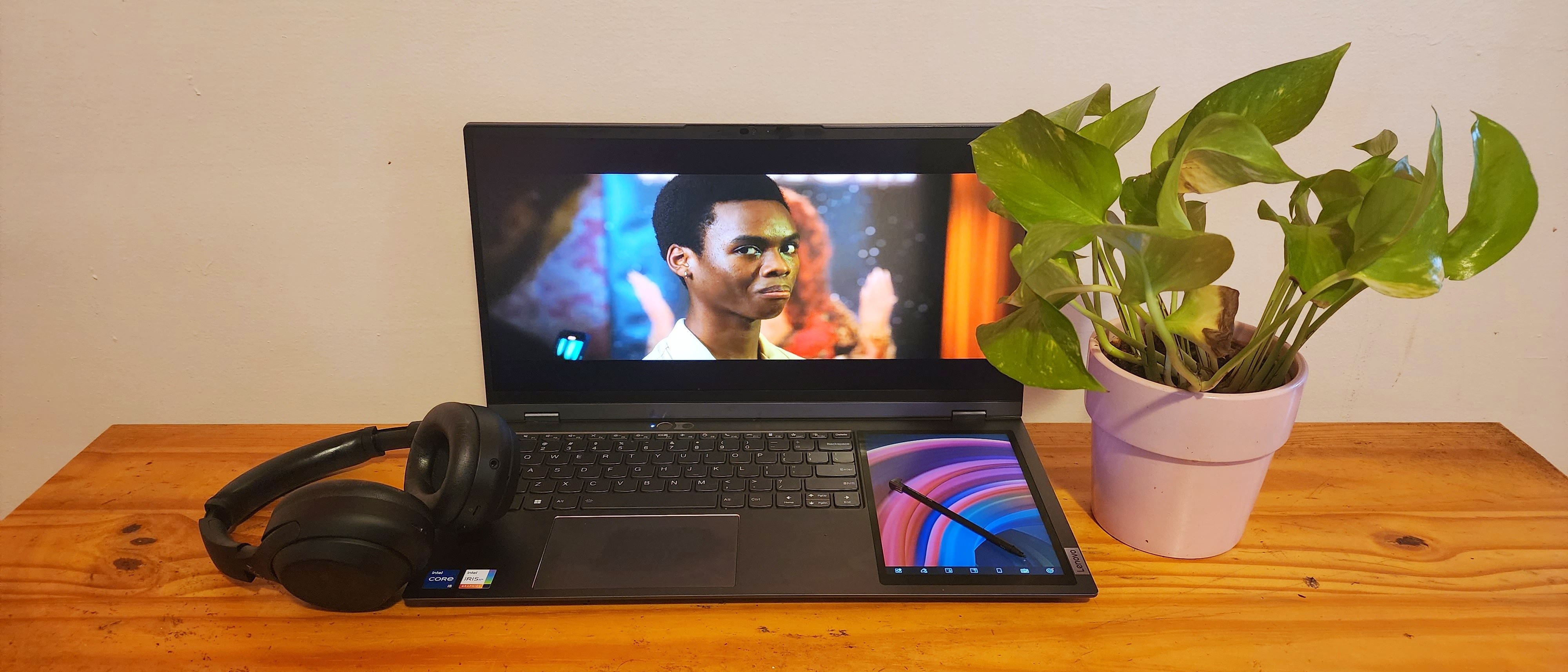
Price: $1,921
CPU: Intel Core i5-12500H CPU
GPU: Intel Iris Xe
RAM: 16GB
Storage: 512GB SSD
Display: 17.3-inch, 3,072 x 1440-pixel, touchscreen
Second display: 8-inch, 1,280 x 800-pixel, touchscreen
Battery: 6:52
Size: 16.1 x 9.0 x 0.6~0.7 inches
Weight: 4.4 pounds
The Lenovo Thinkbook Plus Gen 3 is the first laptop of 2023 to actually wow me. Manufacturers have been boring me to tears with their dreary-gray clamshell notebooks, lame-o Chromebooks, and black business workstations. Where is the innovation, thrill and drama?
I need novelty! It’s what gets me going.
Just as I was at my wits end with this endless landslide of lackluster laptops, the Thinkbook Plus Gen 3 landed on my doorstep — and it just invigorated me from head to toe. This Lenovo beauty has two displays in one laptop. No, that’s not exactly a novel feature with laptops like the Asus ZenBook Pro 14 Duo OLED (its secondary display is propped up between the main display and keyboard), but it’s the first time I, as a reviewer, have had the privilege of reviewing a dual-display laptop.
The Thinkbook Plus Gen 3 has a beautiful main 17.3-inch, 3K display. It’s ultra-wide AF with a dazzling 21:10 aspect ratio. (I don’t think I’ve ever reviewed a laptop with a 21:10 aspect ratio!) And the secondary display is a sight to behold — it looks like someone shoved the keyboard to the left, cut a rectangle into the deck, and dropped in an 8-inch tablet for maximum productivity. As someone who’s constantly cross-referencing different documents on Google Docs and Sheets, this dual-display setup has boosted my workflow beyond my wildest expectations.
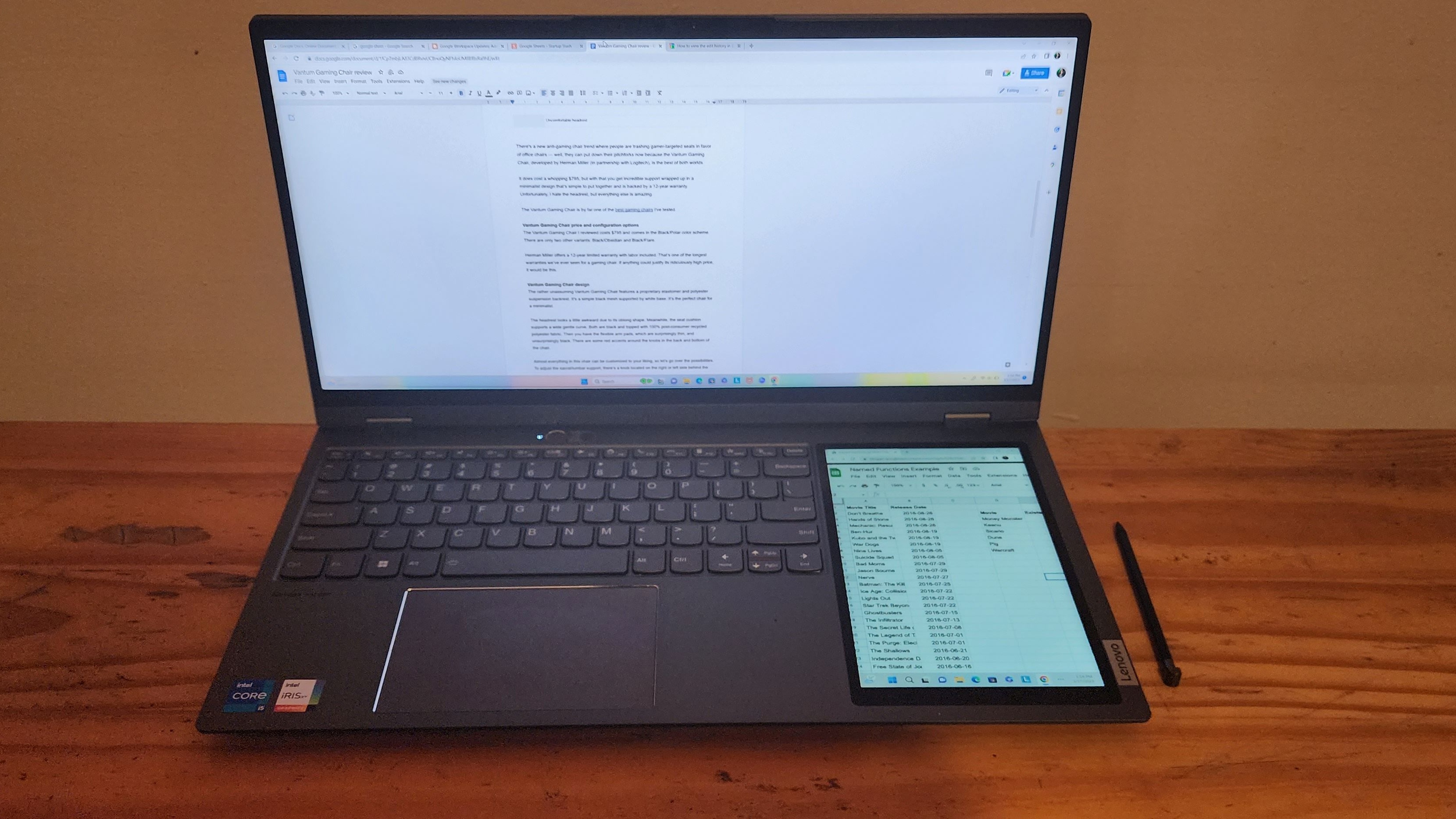
But I won’t lie to you. On the downside, this laptop has sent me running to Lenovo’s support folks more than any other unit I’ve reviewed. The secondary display can be a bit buggy, and it’s not the most intuitive panel to use, but its quirks and peculiarities are tolerable — so far.
Aside from the whimsy second display, there are other aspects of this laptop that deserve a stern side-eye. Without further ado, let’s dive into the good, the bad and the ugly.
Lenovo ThinkBook Plus Gen 3 price and configurations
My review unit is the cheapest configuration you can get. It has a starting price of $1,921, but as of this writing, it’s currently on sale on Lenovo’s official website for $1,156 (use code ThinkMarchSave). It comes with a 12th Gen Intel Core i5-12500H CPU, Intel Iris Xe graphics, 16GB of DDR5 RAM, a 512GB SSD, a 17.3-inch, 3,072 x 1440-pixel, touchscreen display, and Windows 11 Home.
If you are a big spender with some money to blow, a maxed out ThinkBook Plus Gen 3 will cost you $2,846 (but again, it’s on sale for $1,709). This bumps the specs up to a 12th Gen Intel Core 17-12700H CPU, 32GB of DDR5 RAM, a 1TB SSD, Windows 11 Pro, and Microsoft Office Professional.
If the ThinkBook Plus Gen 3 is out of your budget, consider checking out the best laptops under $500.
Lenovo ThinkBook Plus Gen 3 design
The Lenovo ThinkBook Plus Gen 3 has the curb appeal of a non-descript industrial building — it’s got an unremarkable, two-tone, gloomy design called “Storm Grey.” The word “ThinkBook” is stamped in conspicuous, shiny letters in a center-right position on the lid, so everyone will know you have a Lenovo laptop, whether you like it or not. (Personally, I’d like it since Lenovo is known for killing it in the business laptop sector.)
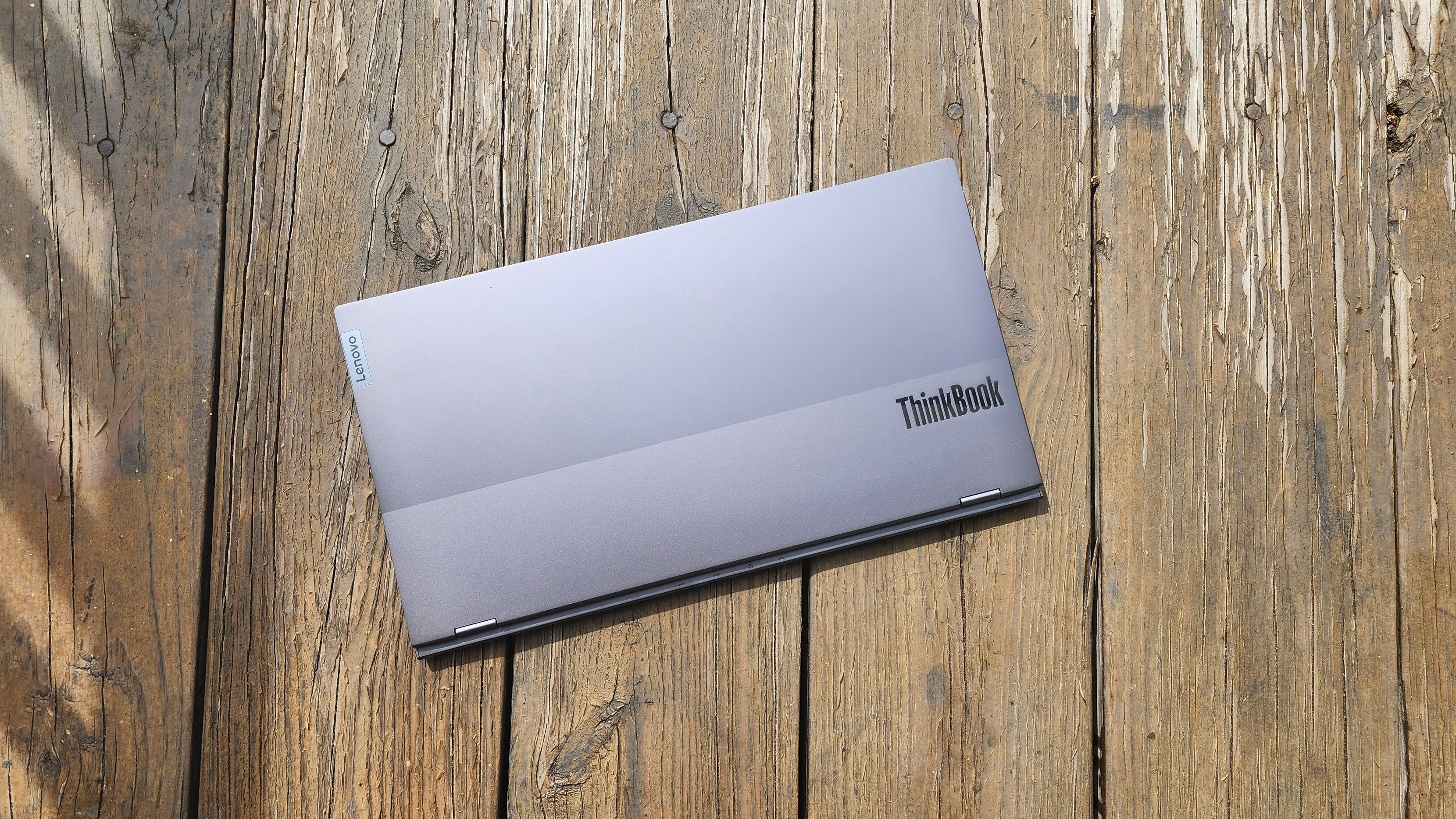
However, once you open the proverbial door, this Lenovo business laptop will blow you — and your co-workers — away.
It goes without saying that the first thing that caught my eye is the striking, second screen splashed on the right side of the deck. It’s as if the display said, “Move over, keyboard! I’m taking up a third of your space — and I won’t be paying rent either!” However, with the second screen leaving less room for the keyboard, I couldn’t help but wonder whether it would feel cramped while typing on it (I’ll dive into my experience later).
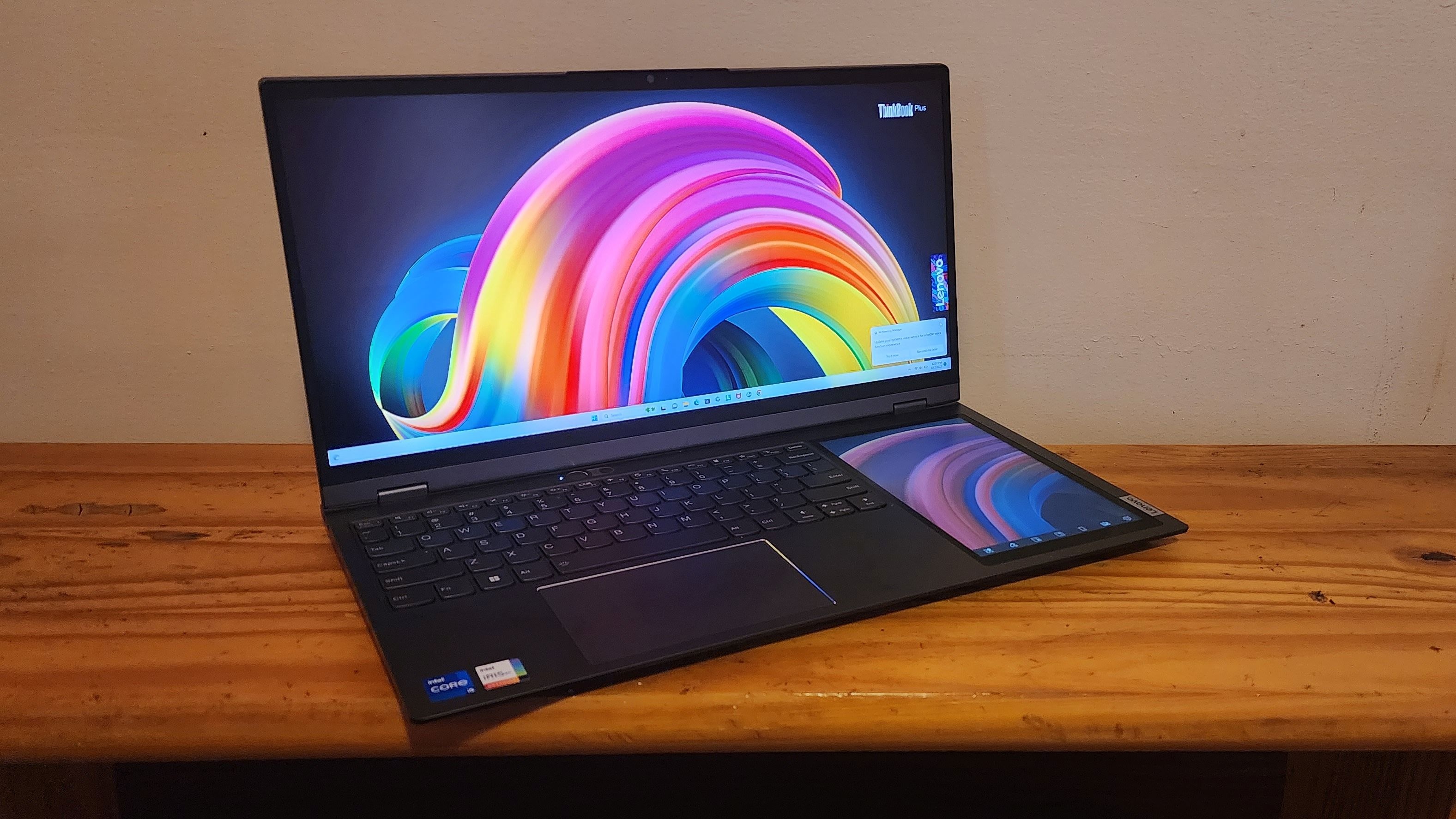
The deck continues to mimic the lid’s ho-hum, business-friendly grayish design with a surprisingly decent-sized touchpad that sits below an array of dark-gray, shield-shaped keys. Above the function keys, you’ll find a power button that doubles as a fingerprint scanner.
Although the ThinkBook Plus Gen 3, wrapped in an aluminum-alloy chassis, weighs over four pounds, it doesn’t feel heavy at all. Lenovo did a great job with this machine’s weight distribution — even my spaghetti arm can pick this baby up with one hand.
The ThinkBook Plus Gen weighs 4.4 pounds and has dimensions of 16.1 x 9.0 x 0.6~0.7 inches. Its competitor in this review, the 16-inch Samsung Galaxy Book Pro 3, is lighter at 3.4 pounds and has dimensions of 14.0 x 9.9 x 0.5 inches.
Lenovo ThinkBook Plus Gen 3 security and durability
The ThinkBook Plus Gen 3 is a lot of fun with its funky deck display, garaged stylus, and other quirky specs, but when it comes to business, the ThinkBook Plus Gen 3 gets serious.
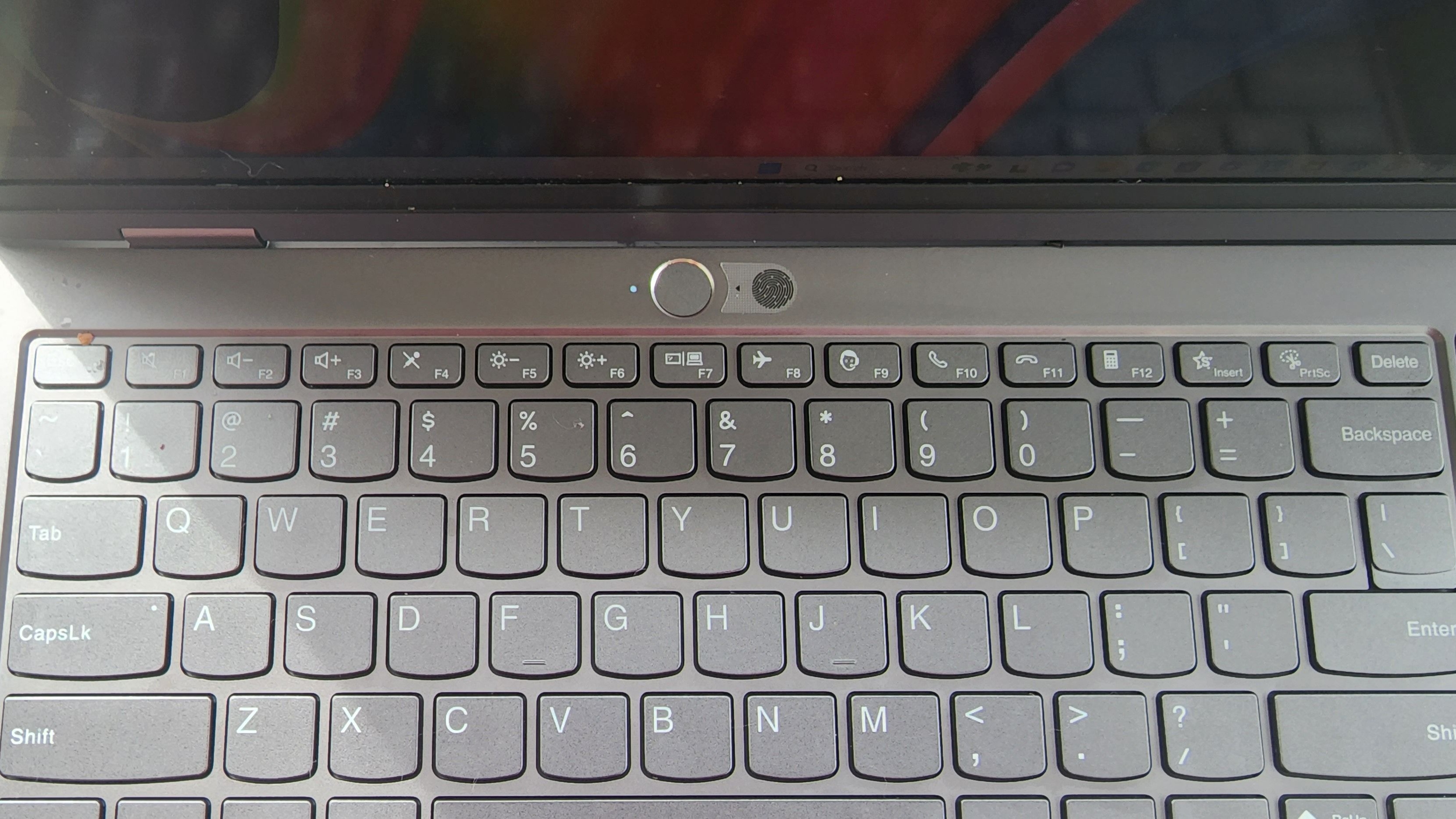
The power button doubles as a fingerprint reader, allowing you to login with Windows Hello swiftly and efficiently. Fortunately, I managed to breeze through the fingerprint recognition setup without any issues. For those who are concerned about peeping Toms, the ThinkBook Plus Gen 3’s webcam comes with a webcam shutter, so you can breathe easy knowing that your privacy is protected.
As far as durability is concerned, it doesn’t have military-tested fortitude (e.g., MIL-STD-810G certification), so I’m not convinced that the ThinkBook Plus Gen 3 could survive being in the hands of a clumsy owner.
At first glance, the build is relatively solid, but when I inspected the touchpad, I noticed there was an unsettling gap between the edge and the deck. And I don’t even want to know what would happen to the second screen if you dropped it awkwardly.
Lenovo ThinkBook Plus Gen 3 ports
The ThinkBook Plus Gen 3 has plenty of holes for you to enjoy. Interestingly, Lenovo placed ports on the back, in between two air vents, as well as on the left side — the right side is completely bare of I/O options.
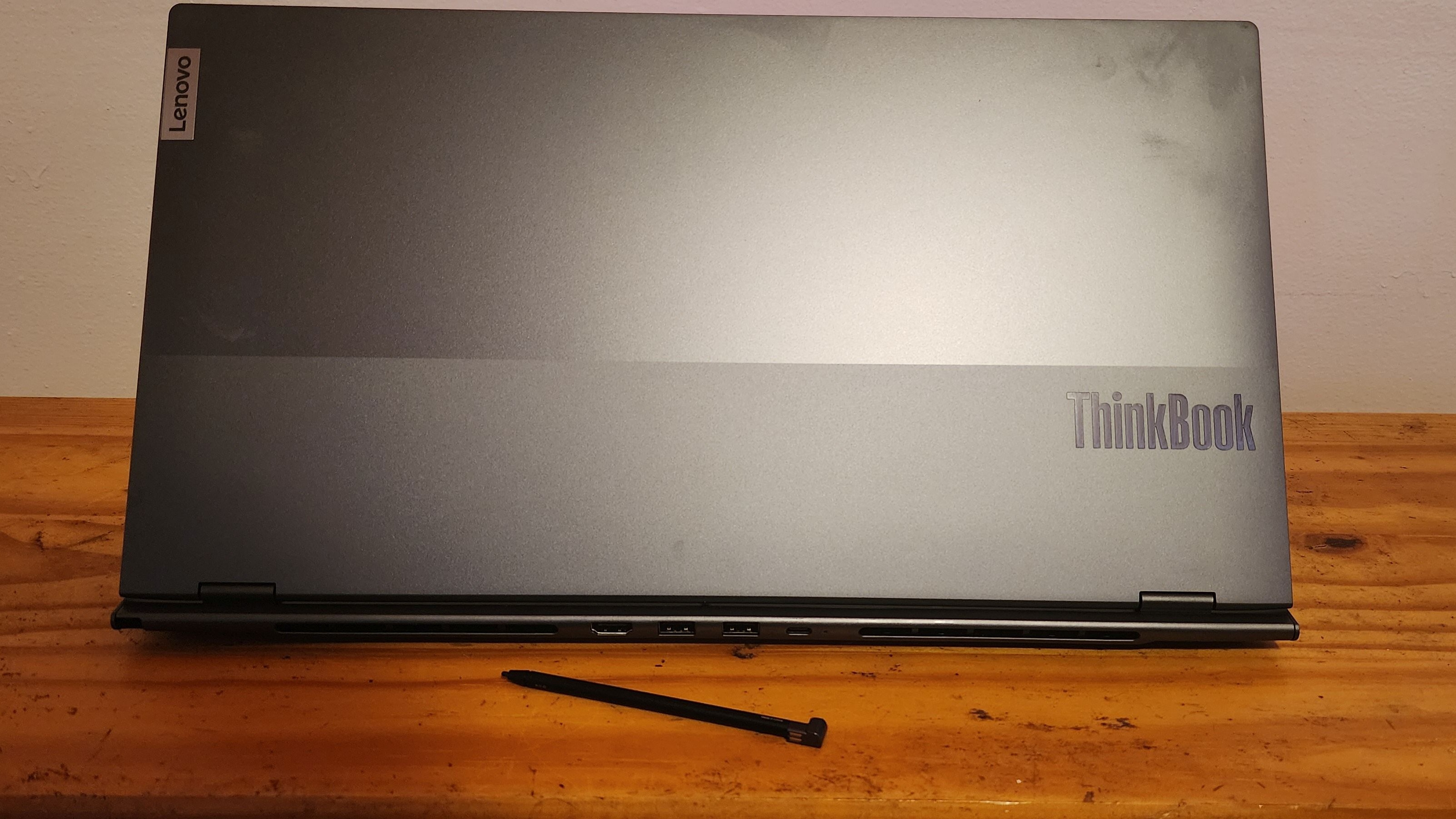
On the back, you’ll find an HDMI port, a USB-A 3.2 Gen 1 port, and a Thunderbolt 4 port. The left side features a headset/mic jack and a USB-C 3.2 Gen 2 port.
Need more? Check out our best USB Type-C hubs and best laptop docking stations pages.
Lenovo ThinkBook Plus Gen 3 main display
Hellllloooooo nurse! This ThinkBook Plus’ massive, striking 17.3-inch, 120Hz, 3072 x 1440-pixel touch display is schmexy. As mentioned at the outset, this is the first time I’ve ever laid eyes on a laptop with a 21:10 aspect ratio — and it’s as wide as a California king-sized bed.
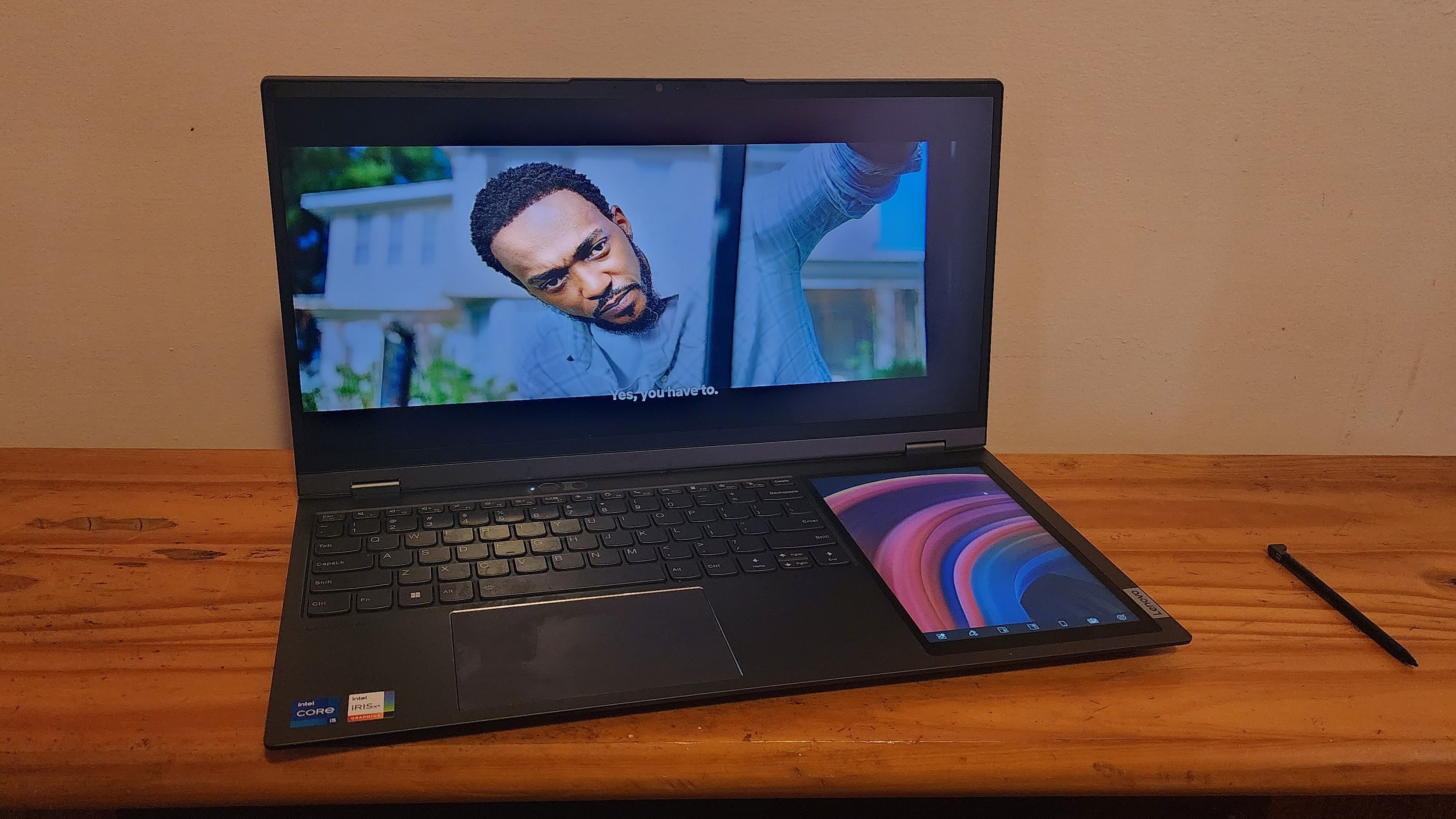
I couldn’t wait to fire up Netflix on this screen, and it was as glorious as I expected it to be. While watching We Have a Ghost, I was taken aback by how true-to-life actor Anthony Mackie appeared on the display. From the tiny scar under his left eye to the tiny strand of gray hair on his chin, I could see it all! The display is so crisp, I could even make out the tiniest of mustache hairs poking from young-adult actor Jahi Di'Allo Winston’s upper lip.
According to our testing, the ThinkBook Plus Gen 3’s panel covers 109% of the DCI-P3 color gamut. This is miles better than the average premium laptop (88%) and the Samsung Galaxy Book 3 Pro (87%), which sports a 16-inch, 2,888 x 1800-pixel, 120Hz AMOLED display.
Lenovo claims that the panel on our review unit emits 400 nits of brightness, but according to our results, it comes slightly short of that at 382 nits. This is brighter than the Galaxy Book 3 Pro’s 377-nit panel, but failed to surpass the average premium laptop (387 nits).
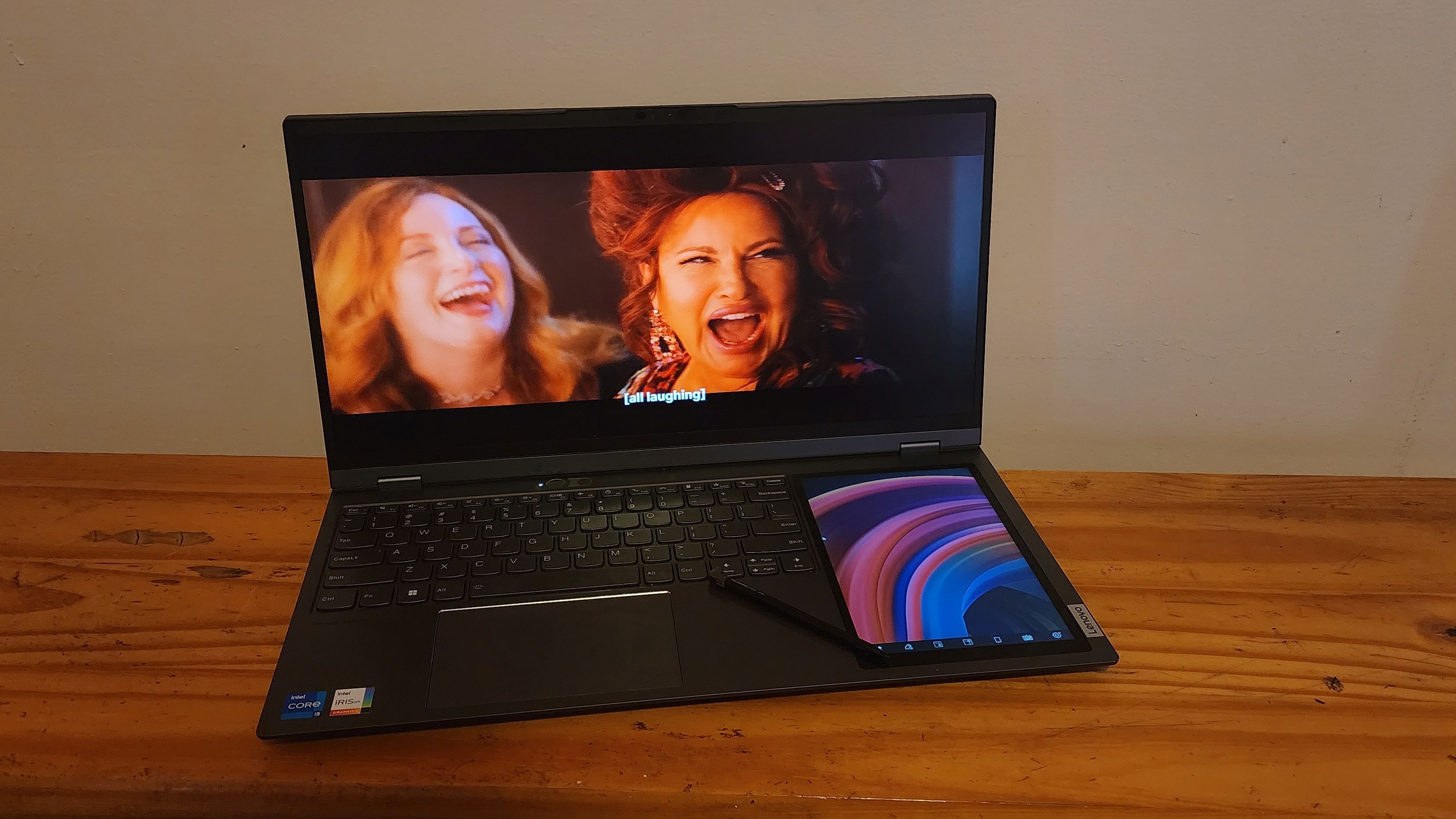
The ThinkBook Plus Gen 3, with a Delta-E color accuracy score of 0.32 (closer to zero is better), could not beat the Galaxy Book 3 Pro (0.21) nor the average premium laptop (0.24).
It’s also worth noting that the ThinkBook Plus Gen 3 has a touch display, and as I scrolled through various long-form articles on The Atlantic, it was highly responsive to my Windows 11 gestures, including pinch-to-zoom, three-finger swipes to revisit previous apps, and more. The only downside I noticed is that the 21:10 aspect ratio is best for visual entertainment for that stunning widescreen effect, but it’s not ideal for long-form reading, which thrives on displays that are more tall than wide.
Lenovo ThinkBook Plus Gen 3 second display
Enough about the main display! Let’s talk about the gorgeous eight-inch, 1,280 x 800-pixel display splashed across the deck — it looks like a built-in tablet nestled right next to the keyboard.
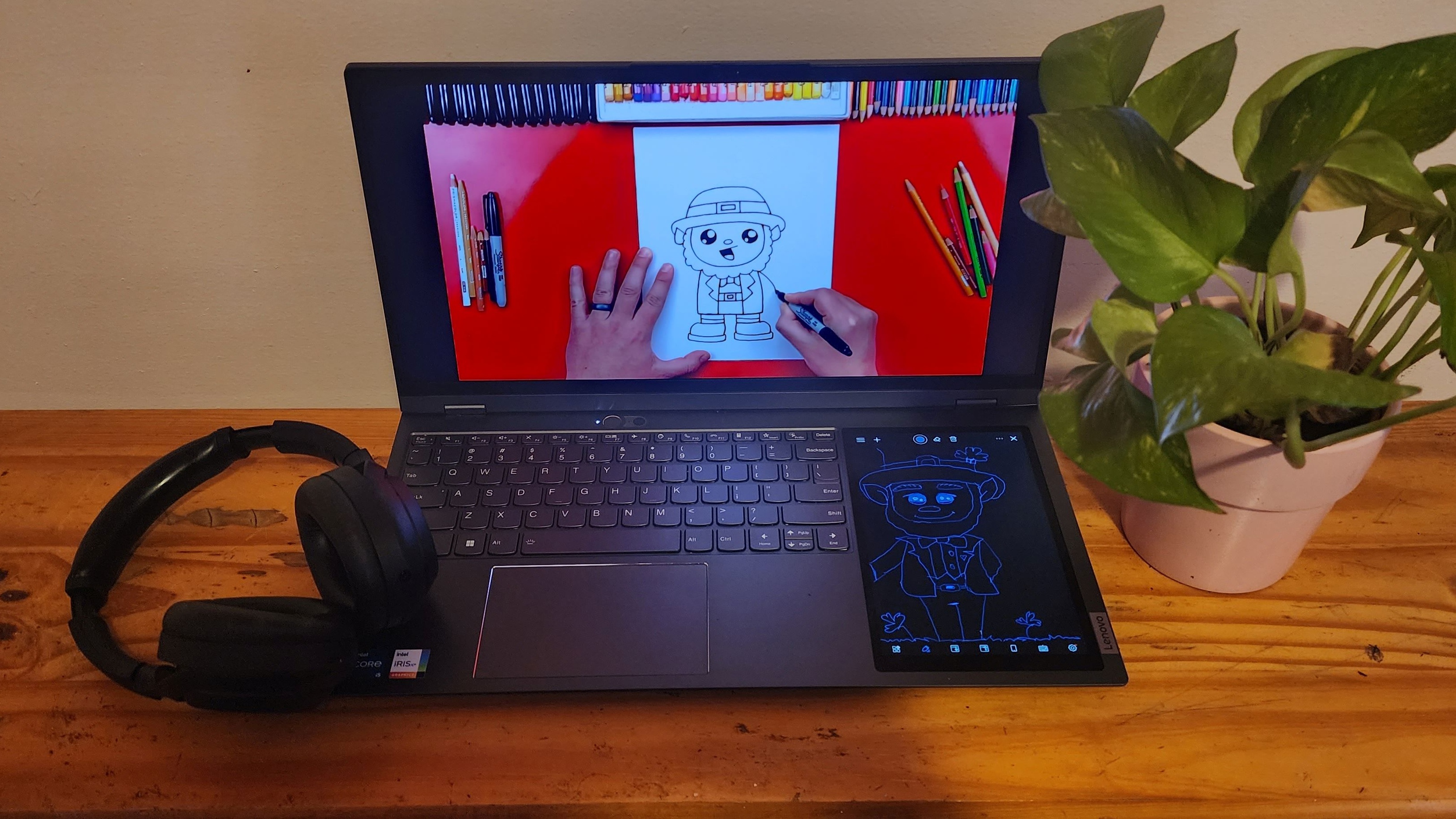
You call it a screen, but I call it a sidekick. This helpful, secondary panel is a godsend for someone who is constantly working with two or more documents for cross-referencing purposes. For example, as I write this review, I have Google Docs front and center on my main display, but I have Google Sheets open, filled with the juicy test results about the Lenovo ThinkBook Plus Gen 3 to help color this piece. I was giddy as I could easily look down at Sheets to breeze through this review.
What are the other use cases for this sweet 8-inch LCD panel? You can use it to draw and take notes while you’re reading an online textbook or listening to a lecture. In my case, I used the secondary display to draw along with an illustration tutorial on YouTube — I drew a leprechaun as I was feeling quite festive for the looming St. Patrick’s Day fun.
The second display has a toolbar with the following options:
- App Groups — gives you quick-and-easy access to your favorite apps
- Drawboard — lets you take quick notes and sketch
- Main display mirroring — the main screen is mirrored on the second display
- Drawboard mirroring — the second display is mirrored on the main panel
- Number Pad — launch a digital NumPad or calculator
- Toolbar Settings — customize the toolbar to your liking
- Motorola Ready for Assistant App — lets you connect select devices to the PC for easy file transfers
Let’s talk about the Ready for Assistant app. I thought I’d have the opportunity to link either my Samsung Galaxy S22 Ultra or my iPhone 14 Plus to the ThinkBook Plus, but to my surprise, when I tried to scan the QR code to kick off the pairing process, neither device worked.
As it turns out, the Ready for Assistant app is only compatible with Motorola phones, including the Motorola Edge, the Moto G200 5G, and Moto G100. I don’t have any of these devices — and I don’t know anyone in real life who does (yes, that was shade) — so I couldn’t test this feature. However, keep in mind that you can still pair your Android (iOS devices will be supported soon) via the Your Phone app.
What I don’t like about the second display, however, is that it is often too slow for my tastes, taking several seconds to respond to my requests for Main display mirroring and Drawboard mirroring.
Lenovo ThinkBook Plus Gen 3 keyboard and touchpad
I’ll just say it straight up — I do not like the ThinkBook Plus Gen 3’s keyboard. However, I dislike it for a different reason than I initially thought.
Surprisingly, the keyboard being shifted to the right of the deck to make room for the 8-inch second screen doesn’t bother me at all. Keep in mind that this laptop is gigantic with a 17.3-inch display, so there’s plenty of room for the island-style keyboard to breathe. With the quick press of the spacebar and Fn button, you can turn on the backlight, which has three levels of brightness.
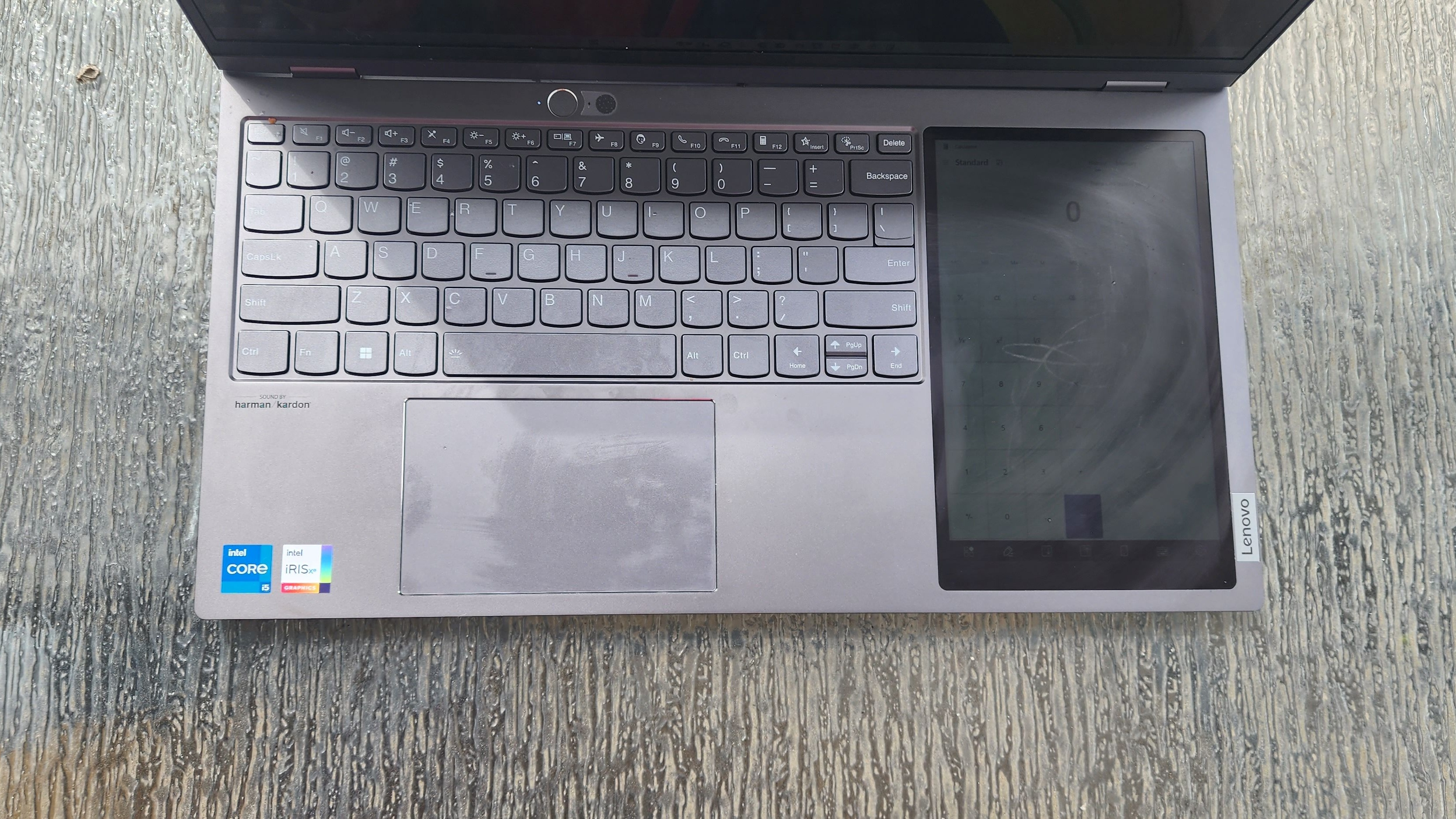
The contrast on the keys are great — you can’t go wrong with white letters and symbols superimposed on dark-gray keys. However, what I don’t like about this keyboard is that it’s mushy as all get out. With each press, I feel like my fingers are sinking in quicksand and I need to exact too much force to leap from one key to another. No, it’s not bad enough that I would write off this laptop completely, but it does give me pause, especially since Lenovo is known for its keyboards.
On the 10FastFingers.com typing test, I reached 86 words per minute, which is slightly less than my average (87 to 89 wpm), but it’s negligible.
The 4.8 x 3.0-inch touchpad on this deck is huge. However, its large size can be a downside because I often found myself poorly estimating the location of the left click, often accidentally landing on the right-click area. Whoops! (Oh, how I miss touchpads with dedicated buttons.) Other than that, the touchpad is a dream; I executed Windows 11 gestures such as pinch-to-zoom, three-finger swiping, and two-finger scrolling without any issues.
Lenovo ThinkBook Plus Gen 3 stylus
Styli are cool and all, but many laptops — ahem, the Samsung Galaxy Book 3 Pro 360 — refuse to offer silos for them. Fortunately, the ThinkBook Plus Gen 3 doesn’t follow that trend; it’s got a garaged pen parked behind the hinge ready for you to use.
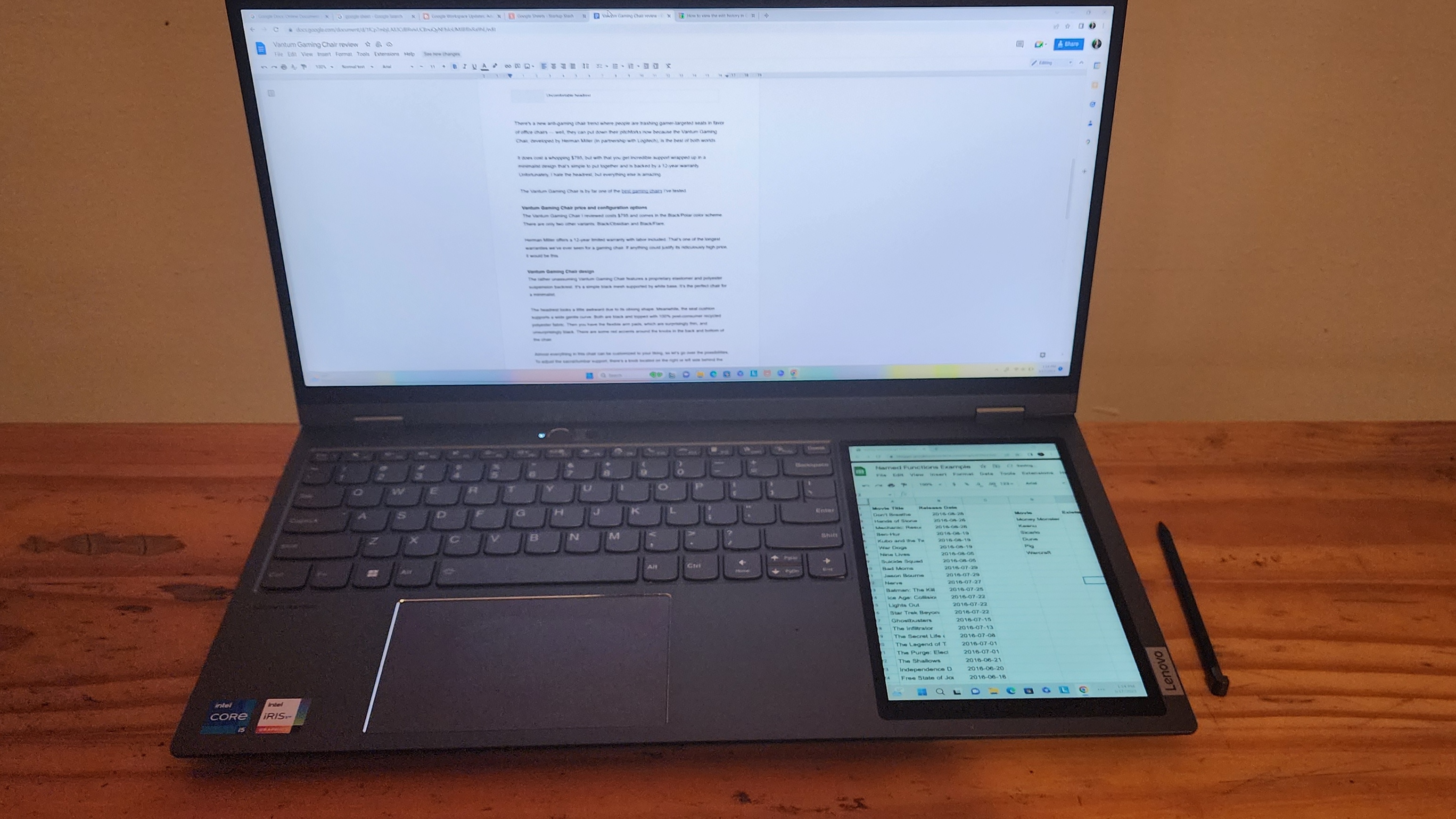
With a simple, satisfying click, the stylus pops right out. Since it’s been charging while sitting in the garage, it should be ready to use. There’s nothing particularly special about this integrated pen. It has two configurable buttons, but It’s not ergonomic nor does it have a pen-to-paper feel. Still, its cylindrical shape was comfortable enough as I scribbled and sketched on OneNote — there was virtually no lag nor any other input delays as I glided across the 8-inch screen.
With the Lenovo Pen Settings app, you can configure the two buttons to kick off a number of actions, including Page Up, Page Down, Play, Pause, Paste, Undo, Redo, and more.
Lenovo ThinkBook Plus Gen 3 audio
The ThinkBook Plus Gen 3’s Harman-branded dual speakers, tuned with Dolby Atmos, are bottom firing — and they sure sound like it.
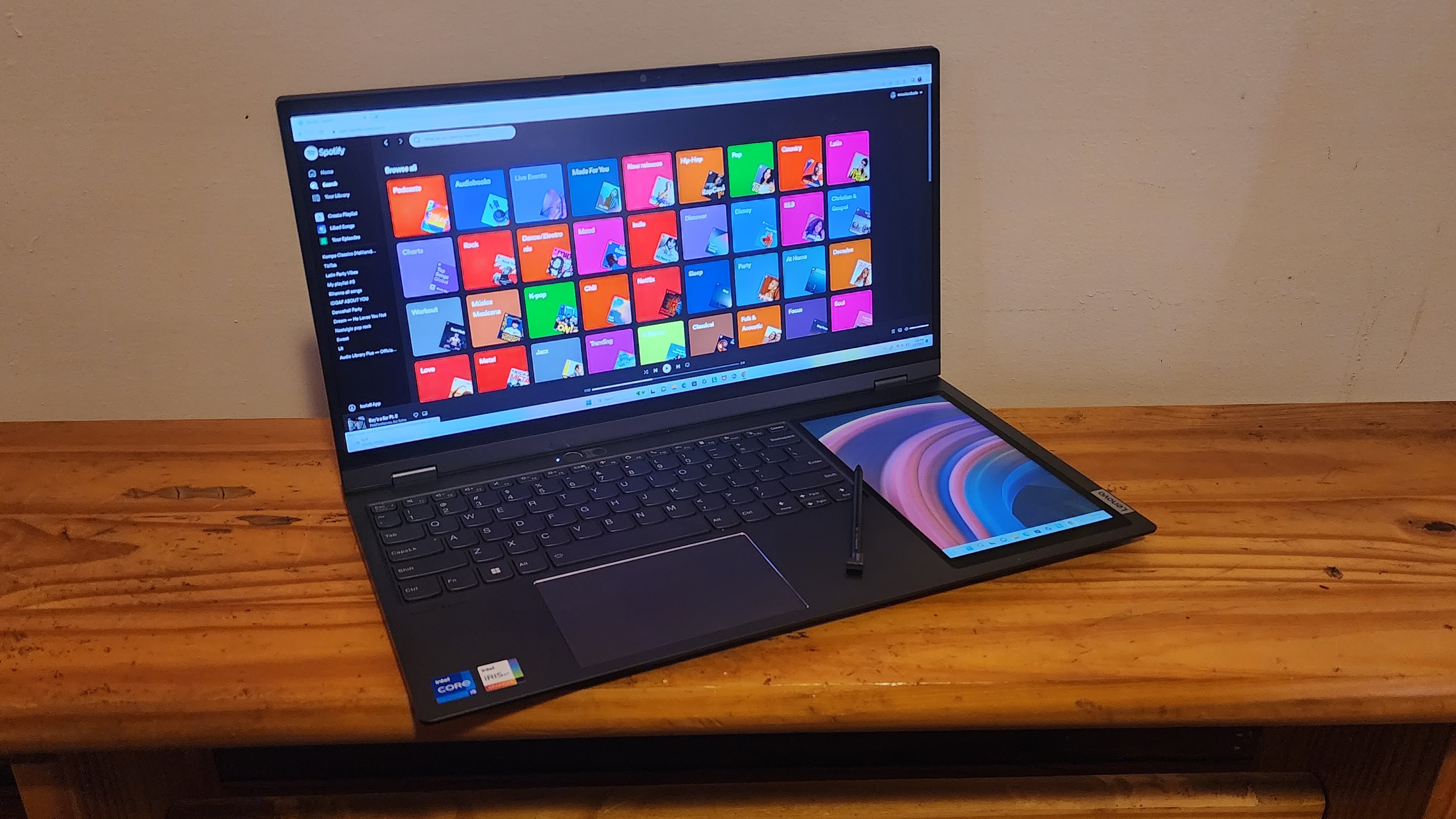
I fired up the Top 50 USA playlist on Spotify and launched SZA’s “Kill Bill.” As the R&B songstress crooned her mean-spirited lyrics that are ironically juxtaposed with a sweet-sounding melody, she sounded muffled and subdued. It doesn’t help that, even at max volume, the speakers didn’t get as loud as I thought they would. The swoon-worthy song couldn’t fill my large-sized testing room.
On the plus side, the quality of the audio is crisp and honeyed. Even at top amplification, there was no distortion.
To personalize your audio settings, you can launch the Dolby Access app, which features
five presets: Dynamic, Movie, Music, Game and Voice. Dynamic and Music were my favorites while listening to SZA, but I leaned more towards the latter because it seemed to have a smoothing effect on the songstress’ vocals.
Lenovo ThinkBook Plus Gen 3 performance
My Lenovo ThinkBook Plus Gen 3 comes with an Intel Core i5-12500H CPU and 16GB of RAM — and I couldn’t wait to put its beastly internals to the test.
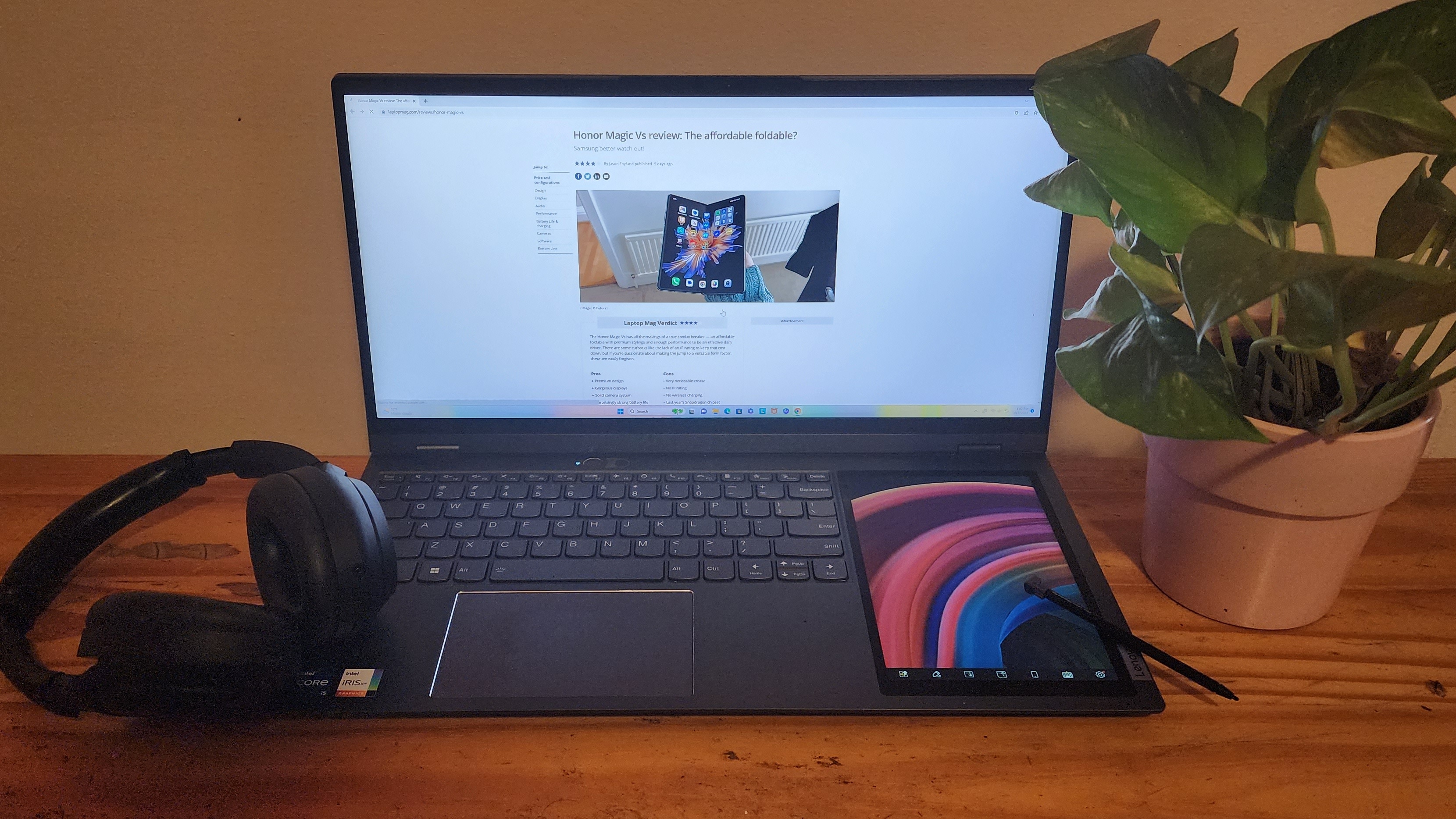
First, I tested its multitasking muscles by launching Google Chrome and inundating the browser with a slew of tabs, 25 to be exact. Two were playing YouTube videos simultaneously. I fired up a fresh Google Doc and began plugging away. Despite all the tab-juggling chaos occurring while I typed, the ThinkBook Plus managed to keep up with me without any stutters or slowdowns.
While you may appreciate my anecdotal experience, the numbers don’t lie, so let’s dive into the Geekbench results. On the Geekbench 5.4 overall performance test, the ThinkBook Plus Gen 3 served up a jaw-dropping score of 9,977. The “H” in “Intel Core i5-12500H CPU” stands for high performance — and it’s really living up to the hype.
Its rival, the Samsung Galaxy Book 3 Pro, sports a 13th Gen Intel Core i5-1340P CPU, and although it’s equipped with a more current processor compared to the ThinkBook Plus, it delivered a slightly weaker Geekbench 5.4 score of 9,746. On the plus side, both beat the average premium laptop’s performance (7,030).
On the file-transfer test, the ThinkBook Plus’ 512GB SSD took only 21 seconds to duplicate 25GB of multimedia files for a file transfer rate of 1,292 megabytes per second. This beats the 256GB SSD inside the Galaxy Book 3 Pro (436 MBps) as well as the average premium laptop (1,287 MBps).
The ThinkBook Plus kept up the winning momentum on the Handbrake video-editing test. The Lenovo laptop converted a 4K video to 1080p in just six minutes and 40 seconds, beating the Galaxy Book 3 Pro by a hair (6:41). Both laptops outpaced the average premium laptop (8:44).
Lenovo ThinkBook Plus Gen 3 graphics
The ThinkBook Plus Gen 3, equipped with Intel Iris Xe integrated graphics, began to slip in graphics performance when we compared it to its Samsung rival.
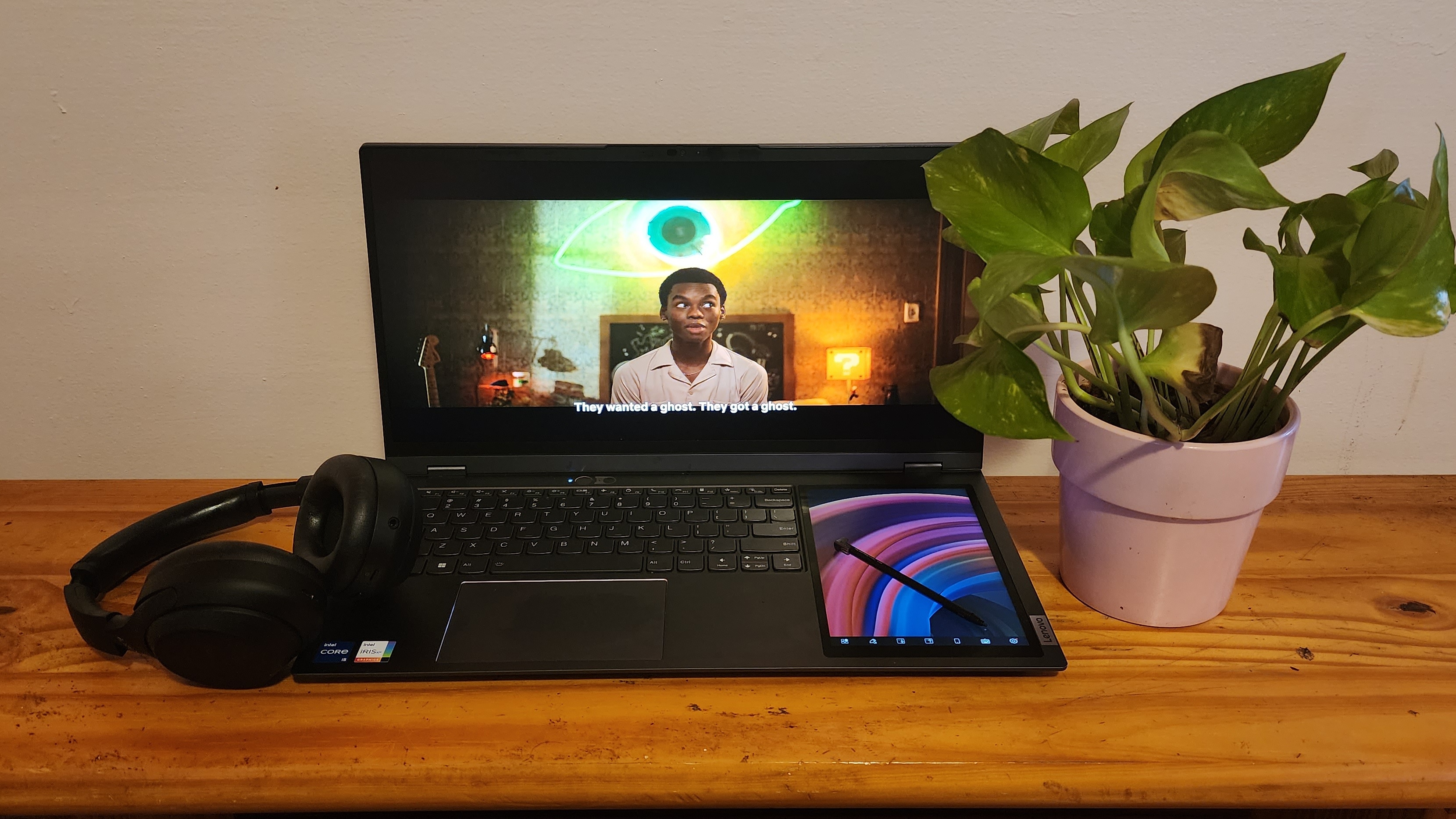
The ThinkBook Plus Gen 3 reached 15,137 on the 3DMark Night Raid benchmark, which tests for integrated graphics’ performance. This is worse than the scores from the Galaxy Book 3 Pro (16,369) and the average premium laptop (16,756).
Don’t get it twisted — the ThinkBook Plus Gen 3 is no gaming laptop by any means. But just for the heck of it, we decided to see how well it could handle Sid Meier’s Civilization VI: Gathering Storm benchmark (1080p). It reached 30 frames per second, which meets our 30-fps playability threshold, but it failed to beat the Galaxy Book 3 Pro (33 fps) and the average premium laptop (48 fps). However, keep in mind that many of the laptops averaged into the latter have discrete graphics that skew the result, so don’t be too alarmed by the discrepancy.
Lenovo ThinkBook Plus Gen 3 battery life
We’ve come to my favorite part of the review — determining how long the Lenovo ThinkBook Plus Gen 3, equipped with a 70 watt-hour battery, can survive on a charge.
Keep in mind that we shouldn’t expect too much from the ThinkBook Plus Gen 3 in terms of power efficiency. It sports a high-performance CPU, a spacious, 17.3-inch main display with a 120Hz refresh rate, and to top it all off, a second touchscreen that takes up a third of the deck. Considering these power-hungry components, the ThinkBook Plus’ battery life isn’t too bad, but it’s not impressive either.
On the Laptop Mag battery test, which involves continuous web surfing over Wi-Fi at 150 nits, the ThinkBook Plus Gen 3 lasted 6 hours and 52 minutes. As expected, this is worse than the average premium laptop (9:57), but interestingly, it beat the Galaxy Book 3 Pro by a hair (6:51). Its Samsung rival doesn’t even have a second screen, so what’s its excuse?!
Lenovo ThinkBook Plus Gen 3 webcam
The ThinkBook Plus Gen 3’s 1080p webcam 1080p actually looks good. It seems like laptop OEMs are finally leaving those fugly 720p webcams behind.
The shooter captures color extremely well, accurately picking up on my burgundy top and my brown complexion. However, I wouldn’t say that it’s the most crisp nor detailed camera. For example, I found that I couldn’t see any of the more subtle details of my skin. But you know what? That could be a blessing in disguise.
It’s also worth noting that this is an IR camera, so you can use it for face-recognition logins. And as mentioned in the security section, it’s equipped with a privacy shutter.
Looking for a better webcam? Check out our external webcam page for something that fits your needs.
Lenovo ThinkBook Plus Gen 3 heat
Who wants a laptop that gets too hot to rest on one’s laptop? Not me! That’s why we tested the ThinkBook Plus Gen 3’s thermals.
After playing a 15-minute, 1080p video, the touchpad on the Lenovo laptop reached 81 degrees Fahrenheit on our heat test. The keyboard peaked at around 88 degrees, and finally, the underside hovered at around 89 degrees. The hottest region on the ThinkBook Plus was somewhere along the vents on its underside, notching 94 degrees, which avoids surpassing our 95-degree comfort threshold.
Lenovo ThinkBook Plus Gen 3 software and warranty
YouTube creators would love the preinstalled Clipchamp Video Editor app, which could manage casual timeline editing like a — well — champ.
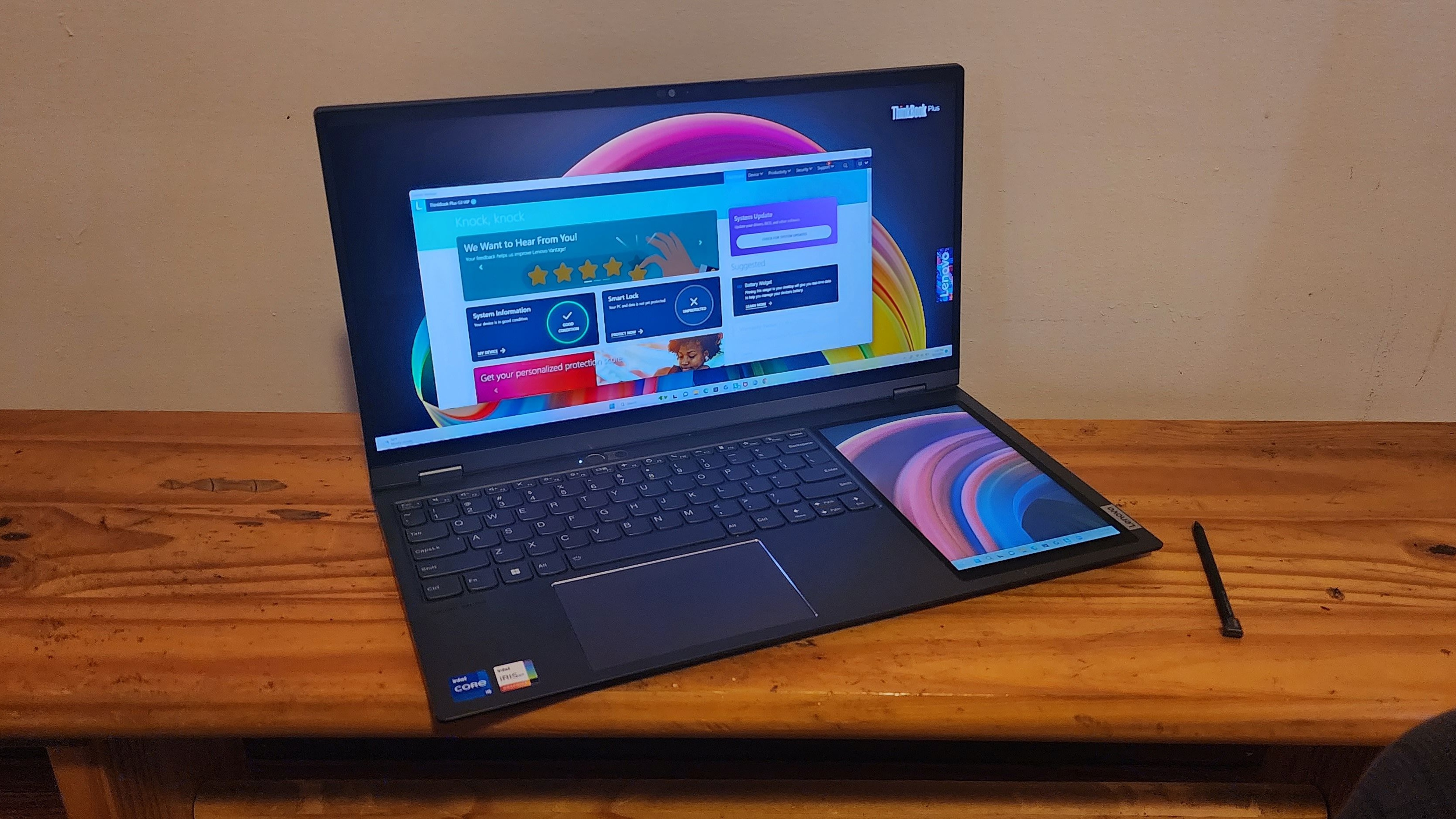
You’ll also find AI Meeting Manager, an app that can deliver real-time translation, interpretation and voice dictation. It can also generate subtitles. Unfortunately, many of its features — if not all — are not free.
The ThinkBook Plus Gen 3 hosts your standard fare of Microsoft apps, including Teams, Whiteboard, OneNote, People, Paint, Movies & TV, Weather, and more.
There’s also a slew of Lenovo-branded apps, including Vantage, your one-stop shop for information regarding your laptop. With this app, you can check your warranty, perform system updates, scan the hardware, contact customer service, and more.
The ThinkBook Plus Gen 3 ships with a one-year warranty. See how the brand fared in our Tech support showdown and Best and worst brands special reports.
Bottom line
I haven’t had this much fun in a long time — I had an absolute blast working with the ThinkBook Plus Gen 3’s dazzling second panel.
From sketching alongside a YouTube illustration tutorial to firing up documents to help facilitate my cross-referencing tactics, I can honestly say that the deck display is not a gimmick. It’s an incredibly useful feature — so much so that I may continue to use it for work to help boost my productivity. However, it’s worth noting that firing up some features on the second display was slow at times.
The main display deserves a pat on the back, too. This ultra-wide display, boasting a 21:10 aspect ratio, is gorgeous! It’s perfect for widescreen entertainment, allowing you to kick back, relax, and stream your favorite shows after work.
However, I’m not a big fan of the keyboard. It’s a little too mushy for my tastes. If it doesn’t feel as if the keys are flinging me from one letter to another, I don’t want it!
So, the question is, who is the ThinkBook Plus Gen 3 for? It’s for users who do a lot of cross-referencing for work or school. This dual-display laptop can, for example, allow you to launch an online textbook on the second panel while you use it to propel the essay you’re writing on the main display. It’s also excellent for notetakers, allowing you to scribble notes on the second display while you listen intently to YouTube lectures. The possibilities are endless.
If you can stomach a slightly slow secondary display and a mushy keyboard, by all means, get yourself the ThinkBook Plus Gen 3. Get it now while it’s on sale for less than $1,160.







